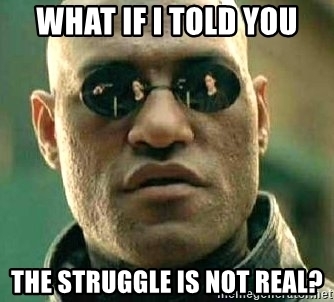And now, for something completely different…
It’s time for the next installment in our series of timely industry analysis (see previous piece on the music industry).
The Golden Globes have been distributed, and everyone’s waiting on the Oscars for the next few weeks. So what better time to take a look at the movie industry.
![]() photo credit: MikeFinkelstein
photo credit: MikeFinkelstein
Here’s a shortlist of trends currently underway in the movie industry – clearly there are even more underneath, but these are the big five trends molding the industry as we speak.
- PRODUCTION TRANSFORMATION – Basically, anyone can shoot a movie these days. Maybe if you’re looking to hire Tom Cruise as the lead and shoot around the Bahamas, you’ll still need plentiful funding. But when it comes to the practical necessities of shooting film, digital technology has truly transformed movie production lately.
Digital cameras have evolved so much that some directors opt for it even if they had ready access to film (examples: David Lynch on Inland Empire and Mark Neveldine and Brian Taylor on the upcoming Crank 2).Things like the much talked about RED camera really make it a no-brainer to make the transition to all-digital. When it comes to software, there are things like PlotBot the free in-browser screenwriting service, Celtx (also free) that makes pre-production planning a smooth experience (storyboarding, call sheets etc.), and editing software is no longer the property of reclusive pros.
Of course, the ingredient that’s the most expensive remains the biggest leverage: talent.
- CONTENT TRANSFORMATION When you look at the covers at your local DVD shop, it doesn’t take long to see that the word formula has really been taken to the extremes in recent years.
Combine the keywords gritty, violent, tough, sexy, and maybe a dash of the supernatural… and some moderately bankable actors, and it’s a go. And more and more, people can smell calculation a mile away. It’s not that the human psyche has changed so much that the old triggers don’t work anymore (they do), but when you try to do it from the outside in, people just tune out. As a result, almost nobody trusts their instincts anymore.
However, the weak signals out there indicate that the other transformations going on in the industry, coupled with the global transformation as a whole (global initiatives such as fighting global warming) will in fact force the movie industry to change the tone of their content to reflect those changes. IF they want to stay profitable without hiking ticket prices abnormally (let’s hope a few good examples will turn the tide).
- DISTRIBUTION CHANGES The changes already long underway in distribution are probably the most worrisome to some, and yet hold the most promise. The fact is, movies have become less relevant as TV has been gaining more interesting programming, it’s even okay for movie actors to do the odd TV show. The advent of sites like Hulu have long since signaled the beginning of true digital distribution (ridiculed as it was when it launched). And iTunes is renting and selling movies in increasing numbers. We’ve even seen some iTunes-only movie premieres.
The movie theater itself is not going anywhere, but the addition of all-digital capability AND 3D (at great cost) tells us the distributors feel they must do more to fight off the competing distribution channels. It’ll be a fight to behold.
- FINANCING CHANGES In these times, even Stephen Spielberg has trouble raising money. The studios are scaling back their production budgets, cutting down on the number of films produced annually, and so on. How crazy must these times be when the studio that made The Lord of the Rings series all but goes under (snagged and stripped by Warner Bros), and Disney lets go of a prized property (the Narnia franchise).
Clearly what the future holds, is more international money (think China and Bollywood, and some smart European money) and multiple sources of financing. Oh, and just less risk-taking for the time being (let’s just hope that means more conscious budgets rather than calculated content formulas).
- NEW REVENUE MODELS More than anything, all these changes mean the people holding the purse strings are looking at various points of leverage to increase the likelihood of healthy ROI for all involved. There’s been a lot of talk about raising ticket prices (it’s already at 11.5 euros here!) but clearly there’s a limit to that course of action. 3D, IMAX, new digital formats… all aim to get people excited about movies again and the ability to charge more. But with new delivery channels such as direct streaming, new payment models such as superditribution (device to device with monetization in between), and release scheduling created around awareness (as opposed to solely the opening weekend) will create entirely new revenue streams and business models that just weren’t there before!
All in all, an industry in the throes of transformation. What’s really important about all this is: entirely new opportunities coming up everywhere!
It doesn’t really matter how the economy is doing – actually, scratch that it does matter – it makes it EASIER to grab an opportunity because everyone is now hyper-sensitive to making things better, cheaper and easier than has been the norm!
So with that in mind, consider the opportunities inherent in these converging changes… and come back later for Part II of this industry analysis, which will outline some specific business opportunities for agile entrepreneurs in this space.
See you at the Oscars! 😉





People reacted to this story.
Show comments Hide comments[…] if you haven’t already, check out my recent industry analysis piece over here […]